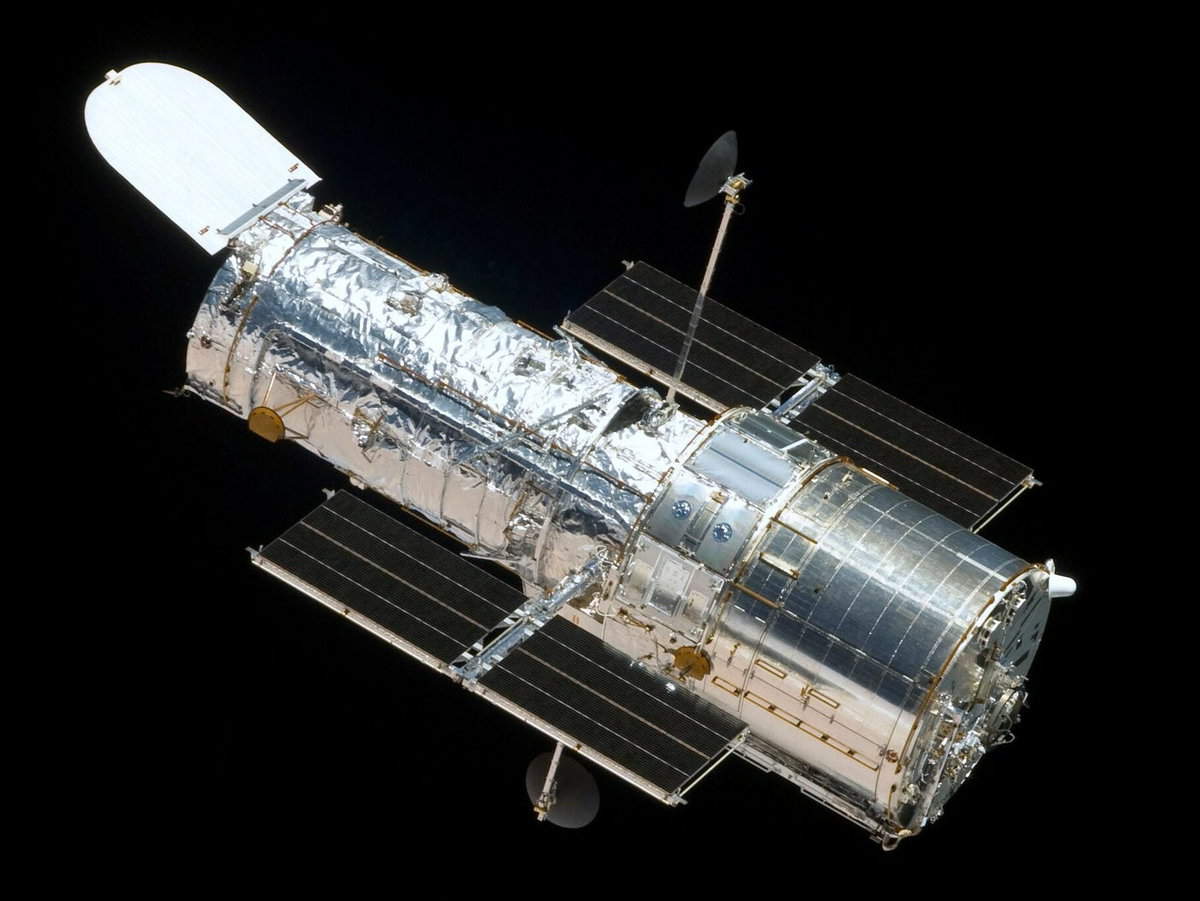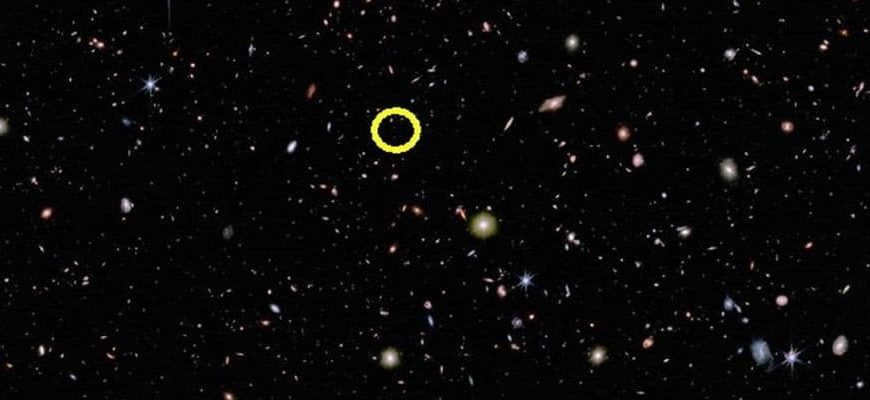
When you stare deeply into the abyss, the abyss starts to gaze back at you. Friedrich Nietzsche.
From December 18 to December 28, 1995, the Hubble Space Telescope conducted observations on a minuscule speck in the expanse of the sky. It resided within the constellation of Ursa Major, also known as the Big Dipper. And at that precise location, there was nothing but emptiness! That specific region of the sky appeared to be overwhelmingly vacant, devoid of stars and other intriguing celestial objects. Nevertheless, the most advanced telescope of its time was aimed directly at that very spot, capturing images of what seemed to be a void space for a total duration of 100 hours!
Why explore the depths of space?
The concept for this type of research originated from the mind of American astronomer Robert Williams. However, not all of his colleagues were supportive of this idea. Typically, the observation of the universe using the Hubble Space Telescope (or any other large telescope) is not something that can be done on a whim.
A special application must be submitted, accompanied by a clear explanation of the purpose of the observation and the expected results. A panel of experts will review the application. Due to the high number of applications compared to the available observing time, the likelihood of rejection is quite high. Even if one is fortunate enough to be granted access, the time allowed for telescope use is limited to just a few hours.
Spending 100 hours simply gazing into nothingness to confirm that nothing was occurring was precisely the kind of undertaking that had zero chance of receiving approval. However, this was not the case for Robert Williams. Why? Because he didn’t need to seek approval in the first place. Why? Because he was the director of the Space Telescope Science Institute at the time. This esteemed institution was responsible for the operation of the Hubble Space Telescope. As the director, Williams had the privilege of utilizing 10 percent of Hubble’s observation time, which he could allocate as he saw fit.
And what did Williams choose to do with this precious time? Well, he wanted to direct his attention towards the vast expanse of empty space in the sky.
Naturally, Williams had meticulously planned his endeavor, and it turned out to be far from pointless.
Still nothing to behold…Photo: NASA.
Exploring the development of galaxies
It is a fact that Williams had a strong interest in the development of galaxies. One of the advantages of studying astronomy is the ability to observe events from the past. This is because the further away an object is, the longer it takes for light to travel to us. Consequently, the images we see are older.
However, it is not always a simple task to observe far-off regions of space. The stars within our own galaxy, the Milky Way, often outshine objects that are much more distant. Additionally, our view is often hindered by dust and gas. This is why Williams was searching for an area in the sky that was completely devoid of any obstructions. No dust, no gas clouds, and no stars.
The idea behind this was that by utilizing a high-quality telescope and gathering light for a sufficient amount of time, it would be possible to observe the most remote galaxies!
Ultimately, the astronomers reached a consensus that the ideal location for observing the phenomenon resided within a specific region of the night sky known as the Big Dipper constellation. Positioned slightly above the handle of the Big Dipper, this area was relatively small in size. In fact, it could be likened to the dimensions of a tennis ball when viewed from a distance of 100 meters with the naked eye.
Breathtaking pictures
In December 1995, Hubble captured 342 individual photographs of a specific area of the cosmos. These images were then merged into a singular picture, combining all the gathered light.
The final image made a profound impact on astronomers. It bore no resemblance to vacant space! Every part of the picture was teeming with specks of light. However, these were not stars! In a seemingly unremarkable corner of the Universe, Williams discovered over 3,000 galaxies!
Some of them were located nearby, while others were situated at a considerable distance from us. This provided us with a valuable opportunity to gain deep insights into the evolutionary processes of galaxies.
The galaxies that were farther away originated shortly after the occurrence of the Big Bang. By analyzing their structure and color, astronomers were able to determine the number of stars that formed within them during those ancient times. Young stars emit a different amount of light compared to older ones, and a comparison with nearby galaxies, which are older, revealed that the rate of star formation in the Universe has already reached its peak. It appears that the majority of stars in galaxies came into existence approximately 8 to 10 billion years after the Big Bang, and since then, the rate of star formation has been gradually declining.
Cosmologists were astonished by the abundance of data encompassed in the distinctive image acquired. Thus far, over 500 specialized articles have been authored regarding it. The distinctive amalgamated photograph stands as one of the utmost crucial wellsprings of knowledge concerning the progression of the Universe and galaxies.
The image is officially known as “Hubble Deep Field” and it is regarded as one of the most significant accomplishments of the renowned space telescope.
Several years later, the experiment was replicated. In this instance, a site in the southern hemisphere was selected, positioned as distant as possible from the original Hubble Deep Field location. This endeavor was labeled as the Hubble Deep Field South. The outcome was remarkably similar to the compilation produced in the initial experiment. The galaxies exhibited identical patterns of behavior and evolution.
This study provided further validation for the cosmological principle, which asserts that the Universe possesses a uniform appearance in all directions. There are no exceptional locations within it. It doesn’t matter where precisely one gazes.
In September 2003 and January 2004, the experiment was conducted once more. In the vicinity of the constellation Orion, the Hubble Space Telescope once again observed a small area of empty space. This time, the total exposure time was 11.3 days. Following that, 800 individual exposures were combined to create a single image. The resulting image, known as the Hubble Ultra Deep Field, captured a staggering number of more than 10,000 galaxies! It is worth noting that the light from the most distant galaxies depicted in the image took an astonishing 13 billion years to reach us. This discovery makes these galaxies some of the most recently formed objects we have observed, having come into existence shortly after the occurrence of the Big Bang!
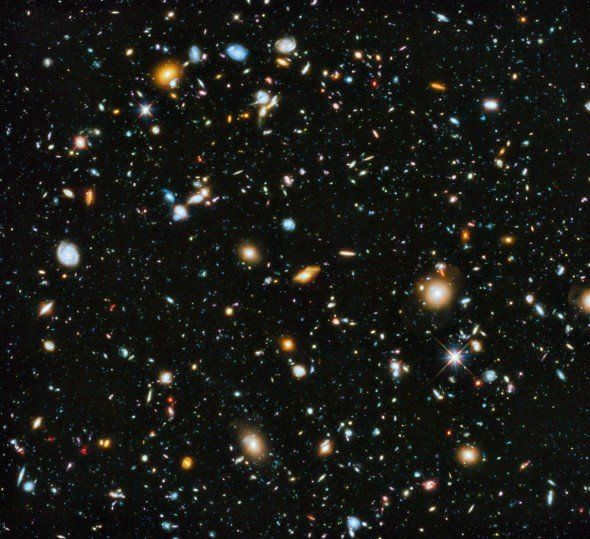
Gaze into the Abyss
"The Hubble Ultra Deep Field has also confirmed a finding from the initial Deep Field observation: the further you peer back in time, the more irregular galaxies come into view. Additionally, galaxies appear smaller the farther they are, indicating their youth. Evidently, the earliest galaxies in the cosmos were relatively compact star clusters lacking the distinctive spiral shape of later galaxies, such as our own Milky Way.
Indeed, it can truly be rewarding to fixate on the emptiness for a prolonged duration…..
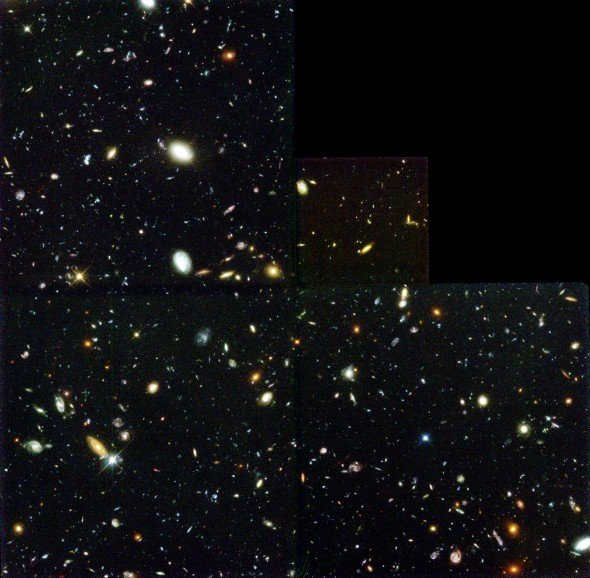
The Hubble Space Telescope is undoubtedly one of the most well-known spacecraft in the history of space exploration. For over three decades, it has been diligently operating in Earth’s orbit, capturing and transmitting breathtaking images of the vast Universe. Today, let us recall some interesting facts about this renowned tool utilized by astronomers on our planet.
On April 25, 1990, the Hubble Space Telescope embarked on its journey into Earth’s orbit, hitching a ride on the space shuttle Discovery.
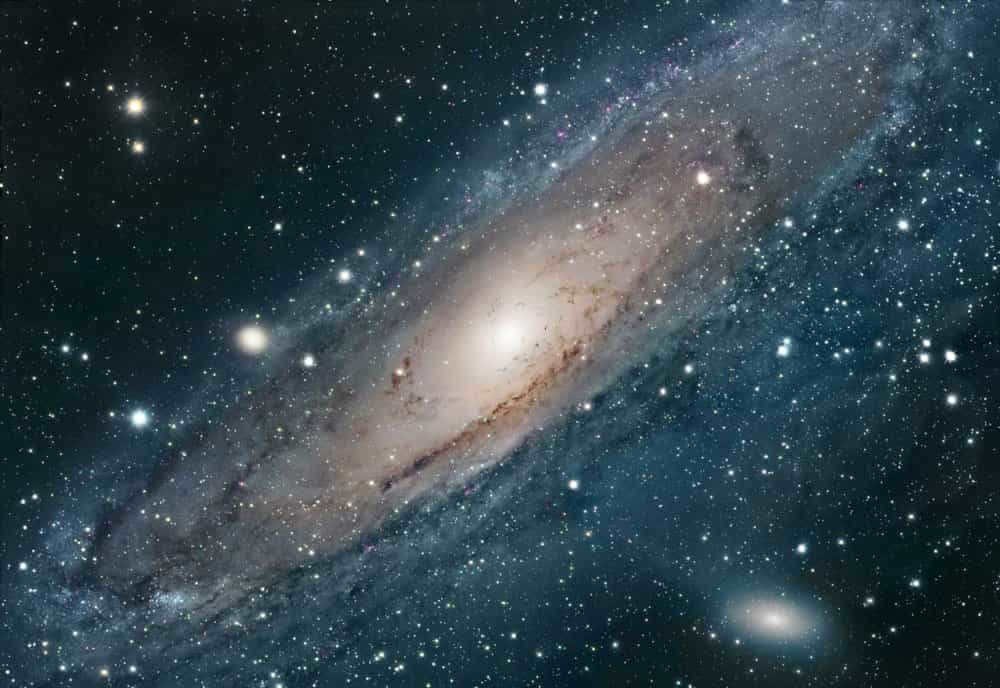
What is the maximum distance that the Hubble Space Telescope can observe?
The Hubble Telescope has observed the most distant galaxy ever known as GN-z11, which is approximately 13.4 billion light-years away from our planet. Due to the finite speed of light (299,792,458 meters per second), the telescope allows us to glimpse into the faraway past. It enables us to see extremely remote objects as they appeared when the light they emitted was captured by the telescope’s mirror. Interestingly, the galaxy GN-z11 is currently situated 32 billion light-years away from Earth, a phenomenon caused by the ongoing expansion of the universe.
What are the physical characteristics of the Hubble Space Telescope?
The Hubble Space Telescope has a weight of 11,110 kg, which is equivalent to the weight of two African elephants. It measures approximately 13.2 meters in length, similar to the size of a bus.
To conduct its observations, the telescope utilizes a large mirror with a diameter of 2.4 meters. However, upon its initial use, it was discovered that the mirror had a small imperfection, causing the telescope to be unable to focus properly. As a result, all the captured images appeared blurry.
Fortunately, this issue was resolved. In December 1993, three years after its launch, the crew of the spacecraft Endeavor successfully repaired the telescope over the course of 11 days and five spacewalks.
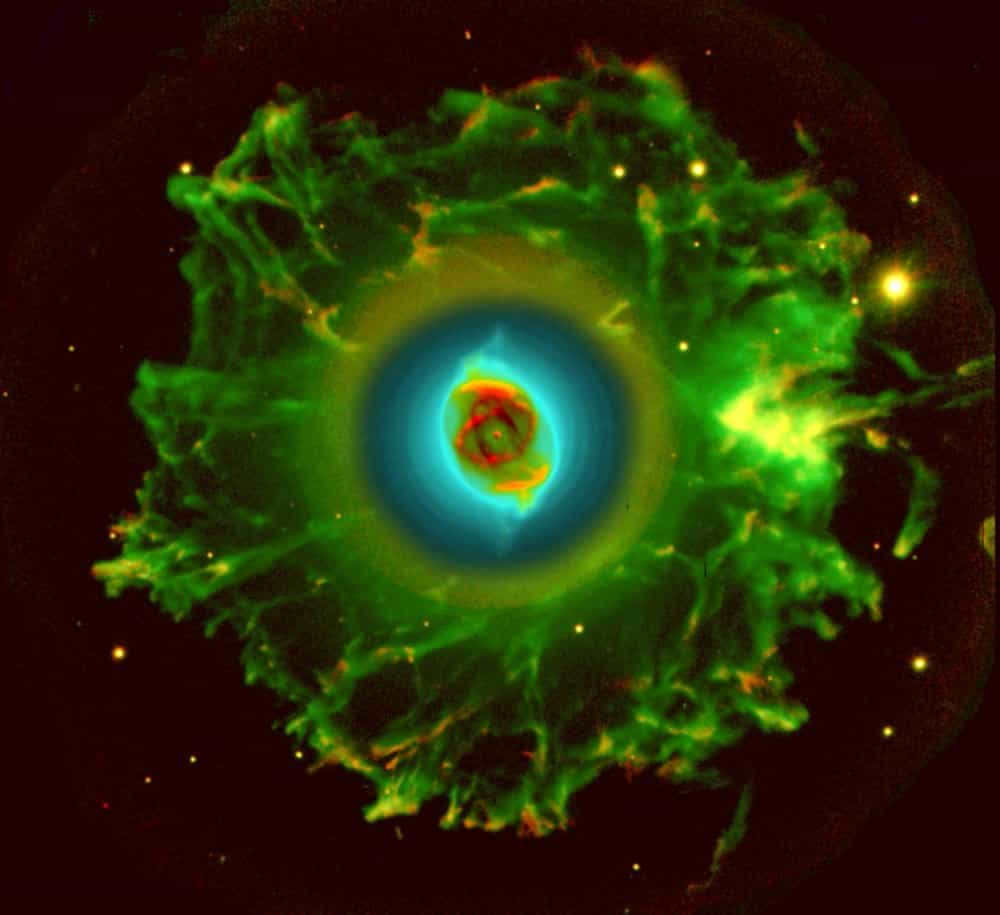

What is the location of the telescope?
The Hubble Space Telescope is positioned in orbit around the Earth, at a distance of 547 kilometers above our planet. It travels at a speed of 8 kilometers per second and follows an orbit with an inclination of 28.5 degrees. The telescope completes one orbit around the Earth every 97 minutes.
What has the Hubble Space Telescope uncovered?
Over the course of its 30-year mission, the Hubble Space Telescope has made over 1.4 million observations, with its data being utilized in 16,000 scientific papers. This groundbreaking telescope has provided scientists with a wealth of knowledge regarding the origins of gamma-ray bursts, the mechanisms behind planetary collisions, and the expansion of the universe. Additionally, it has offered valuable insights into the potential existence of elusive dark matter in the cosmos. Furthermore, Hubble played a crucial role in the discovery of two satellites orbiting Pluto, Nycta and Hydra, confirming the prevalent presence of black holes at the centers of most major galaxies. Moreover, it has contributed to refining our understanding of the age of the universe, as well as facilitating detailed studies of exoplanet atmospheres and galaxy evolution.
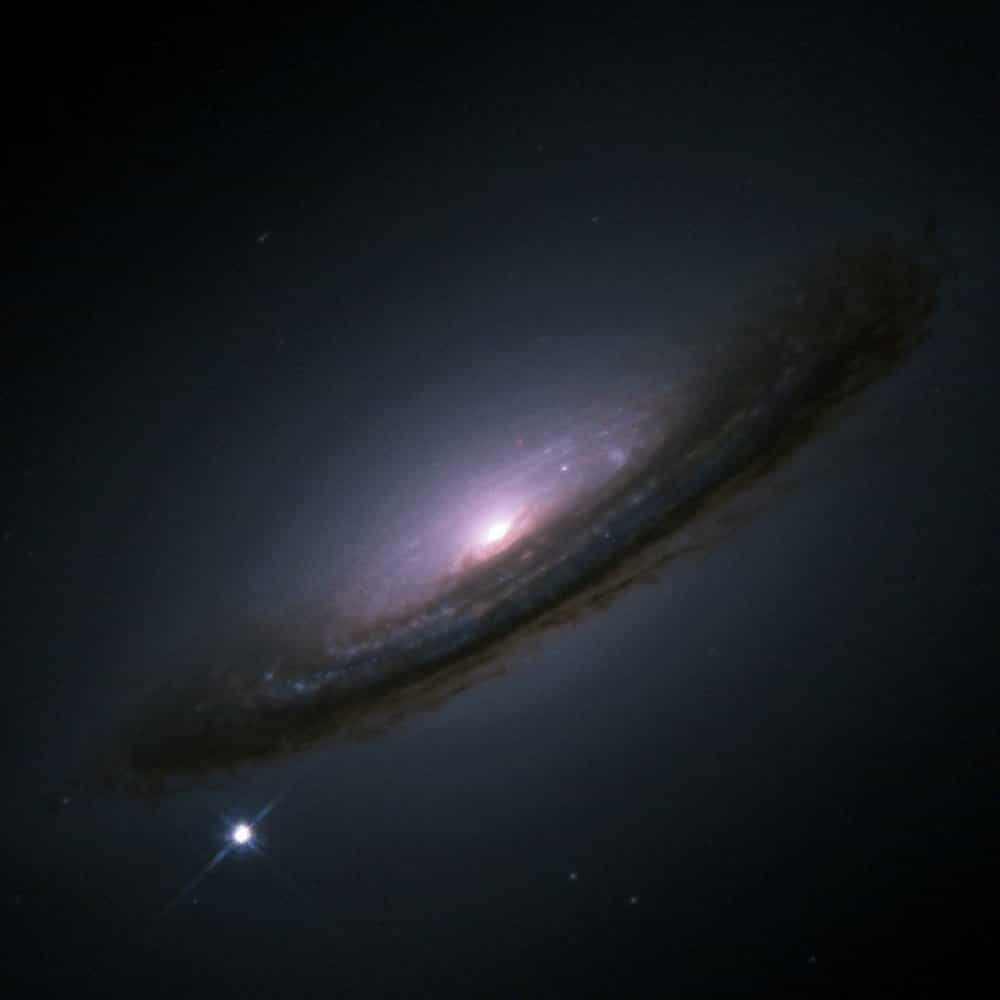
Who is the Hubble Space Telescope named after?
The Hubble Space Telescope is named in honor of Edwin Hubble (1889-1953), an astronomer who resided in California, USA during the 1920s. He utilized the telescope to uncover numerous galaxies.
He is frequently recognized as the individual who validated the expansion of the universe, a breakthrough that was revealed in 1929.
Can someone take his place?
This spacecraft lacks its own means of propulsion. Consequently, the Hubble Space Telescope is continuously descending towards Earth. Nevertheless, this descent is occurring at an exceptionally slow pace. A report from September 2018 forecasts that it will not reenter Earth’s atmosphere until at least 2027, with the most probable date being around 2038.
Nonetheless, its successor, the James Webb Space Telescope, is nearing completion for its upcoming launch. It will possess significantly greater capabilities compared to its predecessor. Just envision the possibilities when you consider that the instrument’s lens has a diameter of 6.5 meters!
The launch of the new telescope is currently scheduled for 2021.

(Presumed view of Pluto)
Have you ever pondered the reason behind the remarkable ability of the Hubble Space Telescope to capture incredibly intricate images of galaxies situated millions of light years away, while its capability to capture detailed pictures of Pluto and other planets within our solar system falls short?
The distinction between images of Pluto and the Andromeda Galaxy
The minimum separation between Earth and Pluto is 4,280,000,000,000 km (7,500,000,000,000 km at its greatest distance)
Furthermore, this is the highest image quality achievable by the Hubble telescope:
On the left is an image captured by the Hubble telescope
On the right is an image of the New Horizons spacecraft, taken after a 9-year expedition to Pluto, in 2015
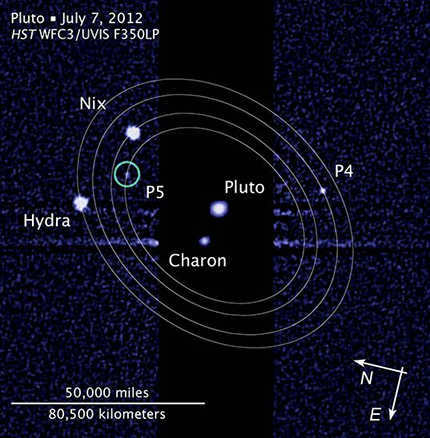 .
. 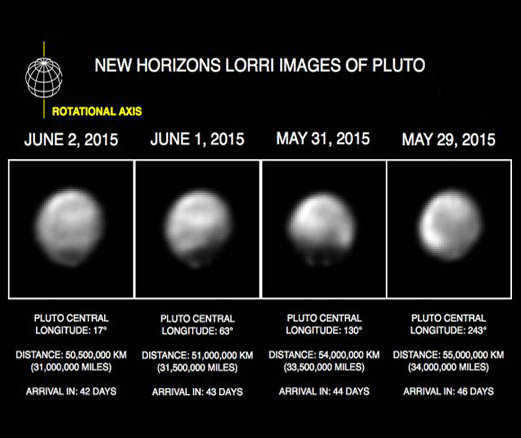
If you are unfamiliar with New Horizons, here is a brief video about the mission:
Additionally, this is what a photograph of the Andromeda galaxy looks like, which is 4,313,207,570 times more distant than Pluto
The distance from the Andromeda galaxy to Earth is approximately 18,921,056,800,000,000,000,000,000 km
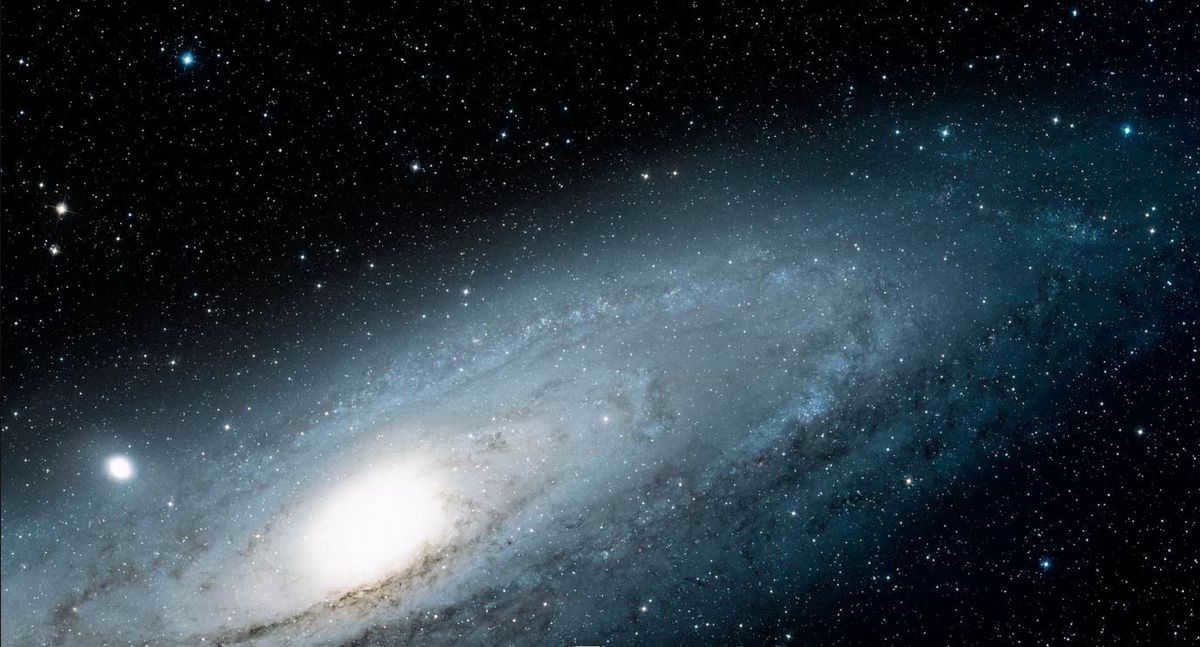
screenshot from the video below
Take a look at this brief video(opens in the same tab) for a better understanding of the magnitude.
Find the video here:
4K Ultra HD
cdn.spacetelescope.org/archives/videos/ultra_hd/heic1502a.mp4
Full HD
cdn.spacetelescope.org/archives/videos/hd_1080p25_screen/heic1502a.mp4
HD & Apple TV Preview
cdn.spacetelescope.org/archives/videos/hd_and_apple/heic1502a.m4v
Unfortunately, embedding the most detailed Andromeda image here is not possible, as it is 4.3 GB in size (requiring 600 HD displays to fully view). However, you can assess the image’s quality by enlarging and viewing it on this website. (All the large illuminated spheres in the image represent stars in our galaxy, while the countless tiny specks visible when zoomed in are Andromeda’s stars).
To gain a better understanding of the magnitude
Light (photon) holds the title for being the swiftest particle known to us, with nothing else matching its speed. However, an exception to this rule is space itself, as we have discovered that beyond the Hubble sphere, the space-time continuum expands at a rate faster than that of light. If you’re interested in delving deeper into this concept, I highly recommend watching an intriguing video on the subject.
Now, let’s put things into perspective:
1 wiki light year is equivalent to a staggering 9,460,528,400,000 kilometers.
It takes approximately 8 minutes for light to travel from the Sun to reach our humble Earth. (and it would take anywhere from 29 to 52 times longer for light to reach Pluto, which translates to 4 to 7 hours). On the other hand, light from Pluto to Earth takes approximately 4 hours to journey (at its closest approach to Earth). Furthermore, if light were to travel from Andromeda to Earth, it would require approximately 912,500,000 days (equivalent to 2,500,000 years).
Therefore, it can be concluded that Pluto is located at a distance of 4 light hours from our position, while the Andromeda Galaxy is situated approximately 21,900,000,000,000 light hours away from us. To put this into perspective, the distance between us and the Andromeda Galaxy can also be expressed as 2,500,000 light years or a staggering 18,921,056,800,000,000,000,000,000 kilometers.
Imagine this – we are not currently observing the Andromeda galaxy, but rather witnessing its state and appearance from 2,500,000 years ago. During this time, as the light traveled towards us, life could have potentially originated and progressed to a certain stage of development on the few habitable planets within this galaxy’s wiki. It’s even possible that some of these species could have surpassed our level of development by a significant margin.
Based on conservative estimates, the visible universe alone is expected to contain at least 4.2 – 5.3 trillion exoplanets within the habitable zone. This suggests a considerable likelihood of life being present on a certain percentage of these planets, given enough time for the evolutionary process to lead to more complex life forms. However, the chances of these life forms resembling humans are minuscule. A slight alteration in any parameter, such as the level of radiation on a planet, would result in a different evolutionary path compared to the life forms on Earth. These parameters span millions of years.
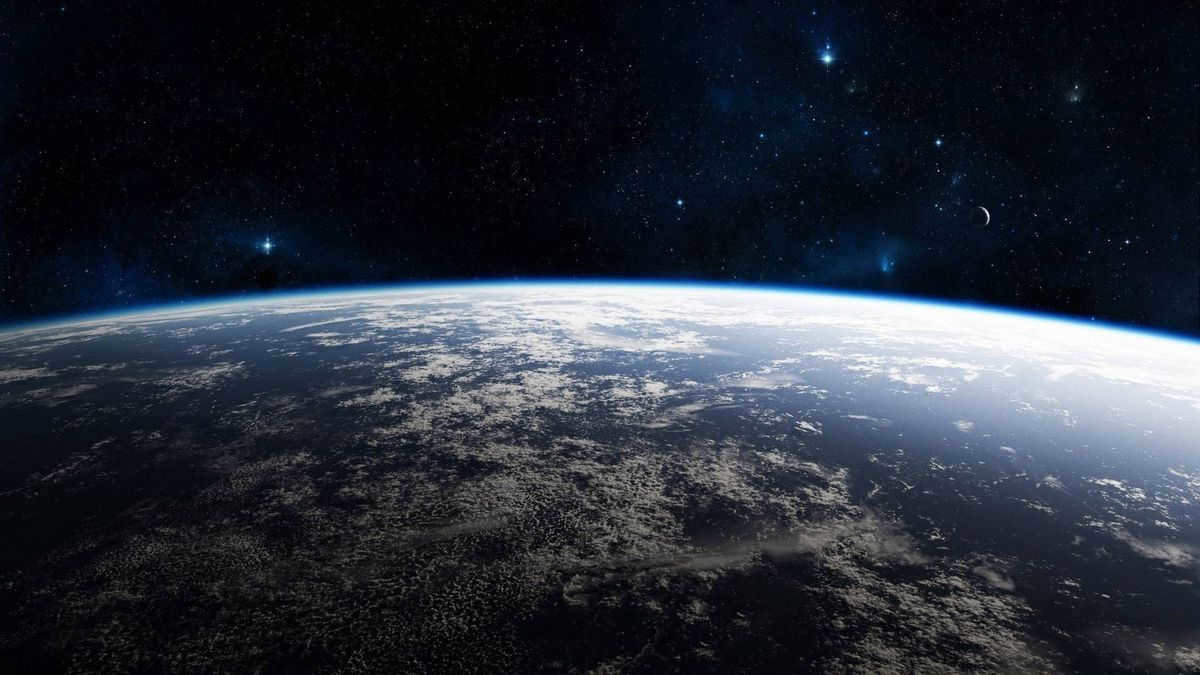
Returning to the subject of the article. Mathematical explanation
To comprehend the reason why we can perceive galaxies so distinctly, unlike Pluto, it is necessary to grasp the concept of the camera’s angular resolution and the ratio of distance to object size.
Angular resolution pertains to the ability of the eye, telescope, microscope, camera, and similar instruments to discern the details of another object. Typically, angular resolution is measured in angular seconds.
1 degree is equivalent to 3600 angular seconds.
For instance, the Moon occupies 1800 angular seconds in our sky, which is equivalent to 0.5 degrees.
Moon
To make it easily understandable for everyone, let’s consider the Moon as a point of comparison.
The Moon has a diameter of 3476 km, and its average distance from Earth is 384,000 km.
During a full moon, it covers 1800 angles of the sky, which is equal to 0.5 degrees.
By utilizing this information, we can compute the dimensions of the object visible on the Moon from Earth without any aid.
The process is quite straightforward: we take the Moon’s diameter of 3476 km and divide it by the 1800 arc seconds that the Moon occupies in the sky. The result is 1.93.
1.93 represents the number of kilometers that one arc second corresponds to, which is determined by the Moon’s diameter and its distance from Earth.
Next, we multiply 1.93 by the angular resolution of the human eye, which is 60, resulting in 115.8 km.
Therefore, the smallest object discernible with the naked eye on the Moon from Earth would be approximately 116 km in size.
If we were to move the Moon further away from us while maintaining its diameter, it would occupy fewer angular seconds in the sky, causing us to perceive less and less detail as the Moon recedes.
Pluto
The angular diameter of Pluto is only 0.115 arc sec (at its closest approach to Earth), which is incredibly small considering its size is just 2400 km in diameter.
(2400 km in diameter) / (4.280 million km) = 0.00000056 (4.280 million km is the distance at its closest approach to Earth, as mentioned previously).
This implies that the smallest object that can be observed on Pluto by the Hubble telescope must be at least 1029 km in size (2368 / 0.115 = 20,600 km. 20,600 * 0.05 = 1029 km).
In other words, at a telescope resolution of 0.05 arc seconds, Pluto would appear as 2 pixels, since 1029 km is nearly half the size of the entire planet.
If you divide Pluto’s ratio by Hubble’s 0.05 angular resolution converted to radians, which is 2.42406841 × 10^-7, you get
0.00000056 / 0.00000024 = 2.3 resolution (px)
The Andromeda Galaxy
is approximately 260,000 light-years in diameter, and its distance from us is about 2 million light-years. The ratio of its diameter to its distance from us is approximately 0.13.
In our sky, it appears to occupy an area of 10,800 arc seconds, which is equivalent to 3 degrees. (For comparison, the Moon appears to occupy 0.5 degrees, making it 6 times smaller than Andromeda.)
To determine its resolution in pixels, we can divide the calculated ratio by the Hubble angular resolution, which is approximately 2.42406841 × 10^-7 radians.
0.13 / 0.00000024 =~541,600 resolution (px).
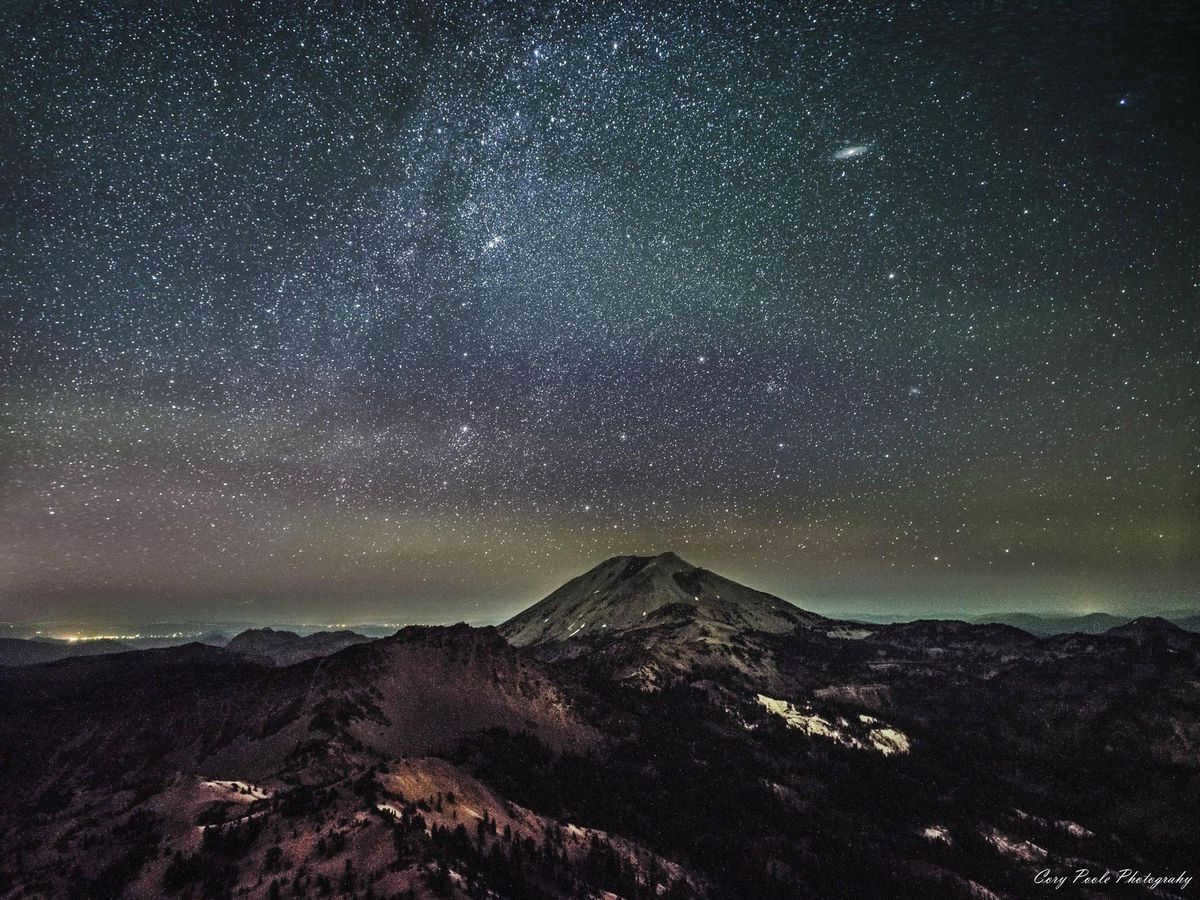
Andromeda is easily visible, but what if we were to observe a more remote galaxy, one of the earliest galaxies to form, like the EGS-zs8-1 galaxy, which is 6550 times more distant than the Andromeda galaxy?
EGS-zs8-1 is located 13.1 billion light years away from us (considering that the age of the universe is 13.8 billion years).
This measurement represents the most extreme distance ever recorded between Earth and another galaxy. The determination of such vast distances relies on the redshift technique, with the greater the redshift value, the greater the distance from Earth. This particular galaxy exhibits the highest redshift ever observed.
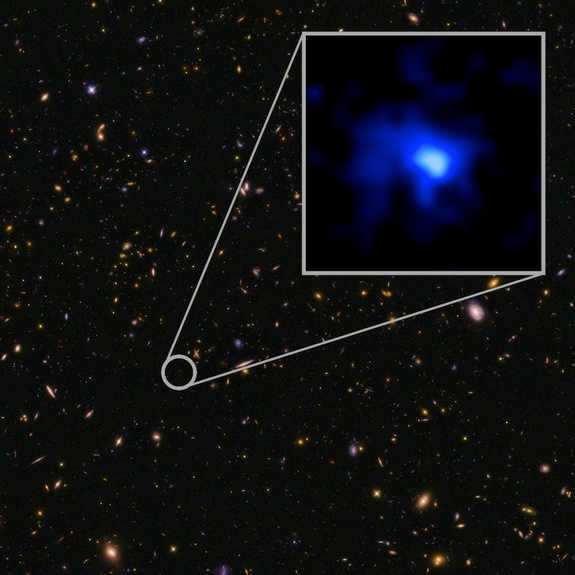
Well, this picture already resembles the image of Pluto that was shown at the start of the article 🙂
The reason why Hubble is capable of capturing such detailed images of galaxies, unlike the planets within our solar system, is due to the immense size of galaxies. Additionally, the ratio between their distance from us and their size (as illustrated above with a ratio of only 0.13 compared to Pluto’s ratio of 0.00000056) allows us to capture such breathtaking pictures, even with a telescope as outdated as Hubble. In the near future, the James Webb telescope will replace Hubble, enabling us to observe galaxies with even greater precision.
As we have already come to understand, Andromeda occupies six times more space in our sky compared to the Moon. If Andromeda were brighter, it would appear in our sky like this.
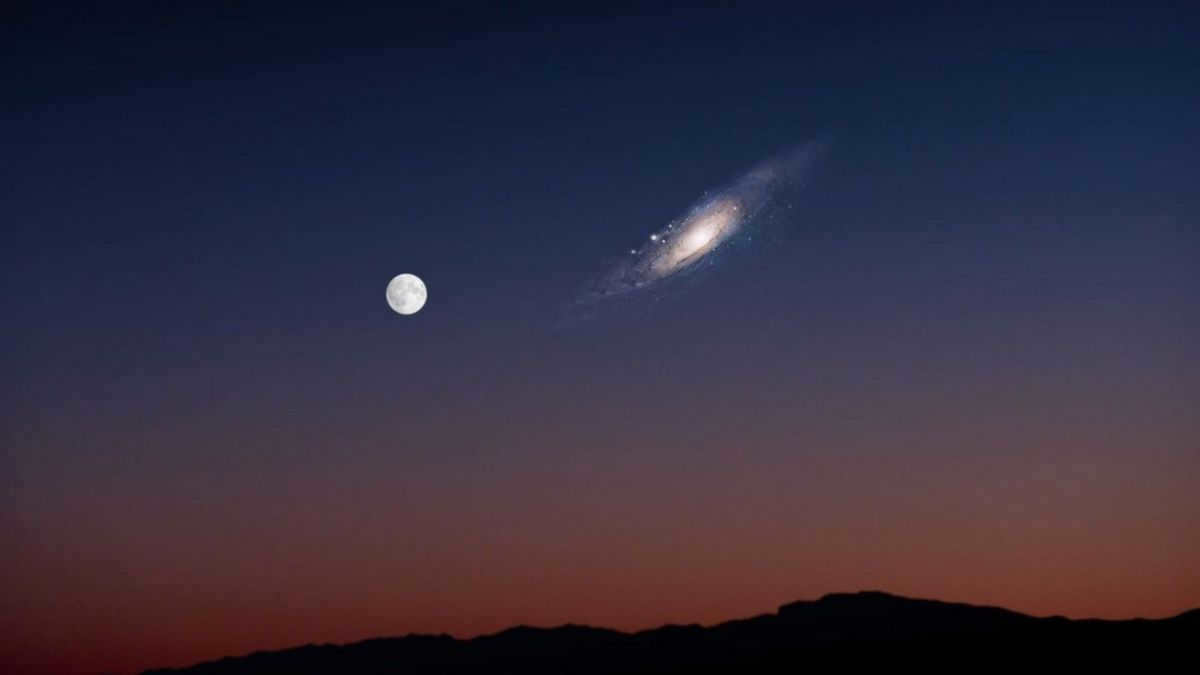
YouTube pruv at 5:35
Even if we take into consideration the galaxy NGC 5584, which is situated at a distance of 70 million light years from us, that is 35 times farther than Andromeda, it will still appear approximately 1200 times more detailed compared to Pluto. This is because, despite the significant distance, the ratio of diameter to distance in the case of NGC 5584 is about 1200 times greater than that of Pluto (0.00069 / 0.00000056 = ~1200).
I hope this explanation helps in understanding why modern telescopes are able to capture incredibly beautiful images of galaxies or nebulas (such as the one shown here or any of the top 100 Hubble photos),
but are unable to provide a detailed enough image of Pluto or some of the other planets in our solar system.
Looking for something interesting to watch about space?
I highly recommend checking out the amazing series “Cosmos: Space and Time” on Kinopoisk. It’s a continuation of Carl Sagan’s famous series.
You can watch it in HD / fullHD on cxz.to or with popcorntime (English only).
(This is not an advertisement)
For those who are interested and know English, I have a stunning video from NASA below. It features a spacecraft that is the pioneer of new horizons. In just two weeks, it will allow us to see our 9th “planet” – Pluto – for the first time. No more blurry dots or gray pixels.
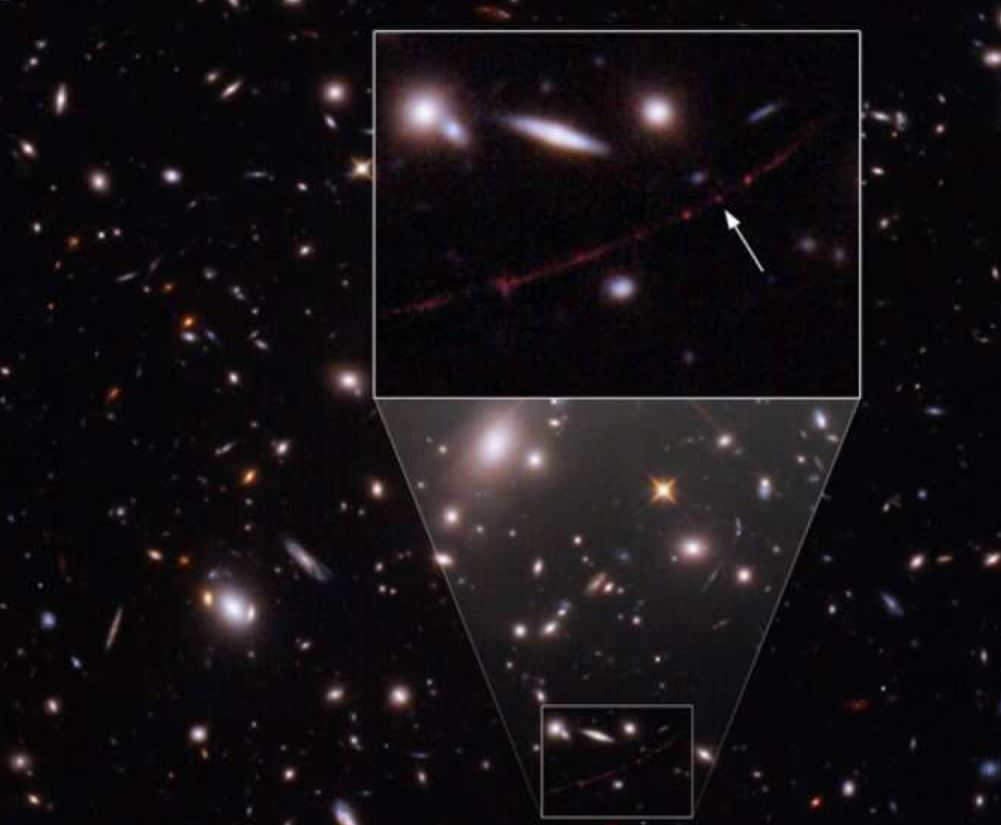

The size of the observable Universe is truly astonishing, with an estimated diameter of approximately 93 billion light years.
When we gaze up at the night sky, our vision typically extends only a few thousand light years, although there are certain celestial objects that can be observed from much greater distances.
The furthest object visible to the naked eye is the Andromeda galaxy, located 2.5 million light years away, but its visibility is contingent on minimal light pollution.
To explore even deeper into space, humanity must rely on the aid of telescopes. How far can we peer into the cosmos using the most advanced telescopic technology available?
The vastness of the cosmos
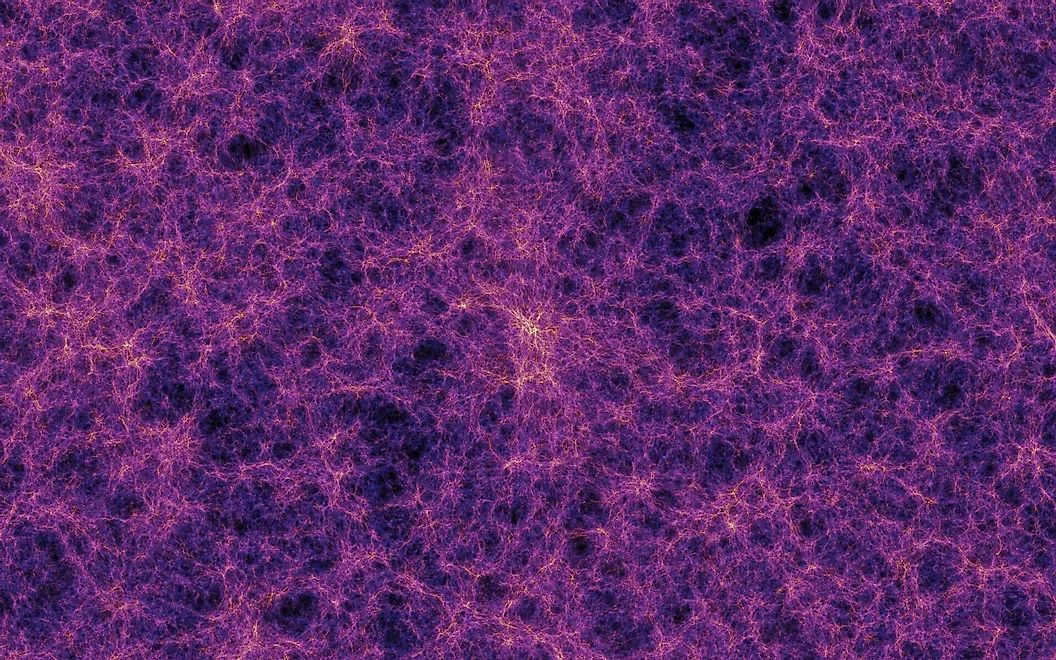

Before we delve into the maximum distance that we can observe, it is crucial to understand the immense size of the universe. As previously mentioned, scientists estimate that the observable Universe spans approximately 93 billion light-years.
However, this figure may seem perplexing since the Universe itself is only 13.8 billion years old. How is it possible for us to see objects that are farther away than the age of the Universe?
This is due to the expansion of the universe and the finite speed of light. We perceive objects as they were in the past, not as they currently exist. For instance, a galaxy that is located a billion light-years away from us has actually traveled a much greater distance over time due to the expansion of space.
In order to make things easier, a good approach to understanding distance is to consider it as the extent to which we can observe the past. In simpler terms, how close can we get to witnessing the Big Bang?
The Contributions of Hubble and James Webb
Prior to the launch of the James Webb Space Telescope (JWST) in 2021, the Hubble Space Telescope boasted the greatest range of visibility in outer space.
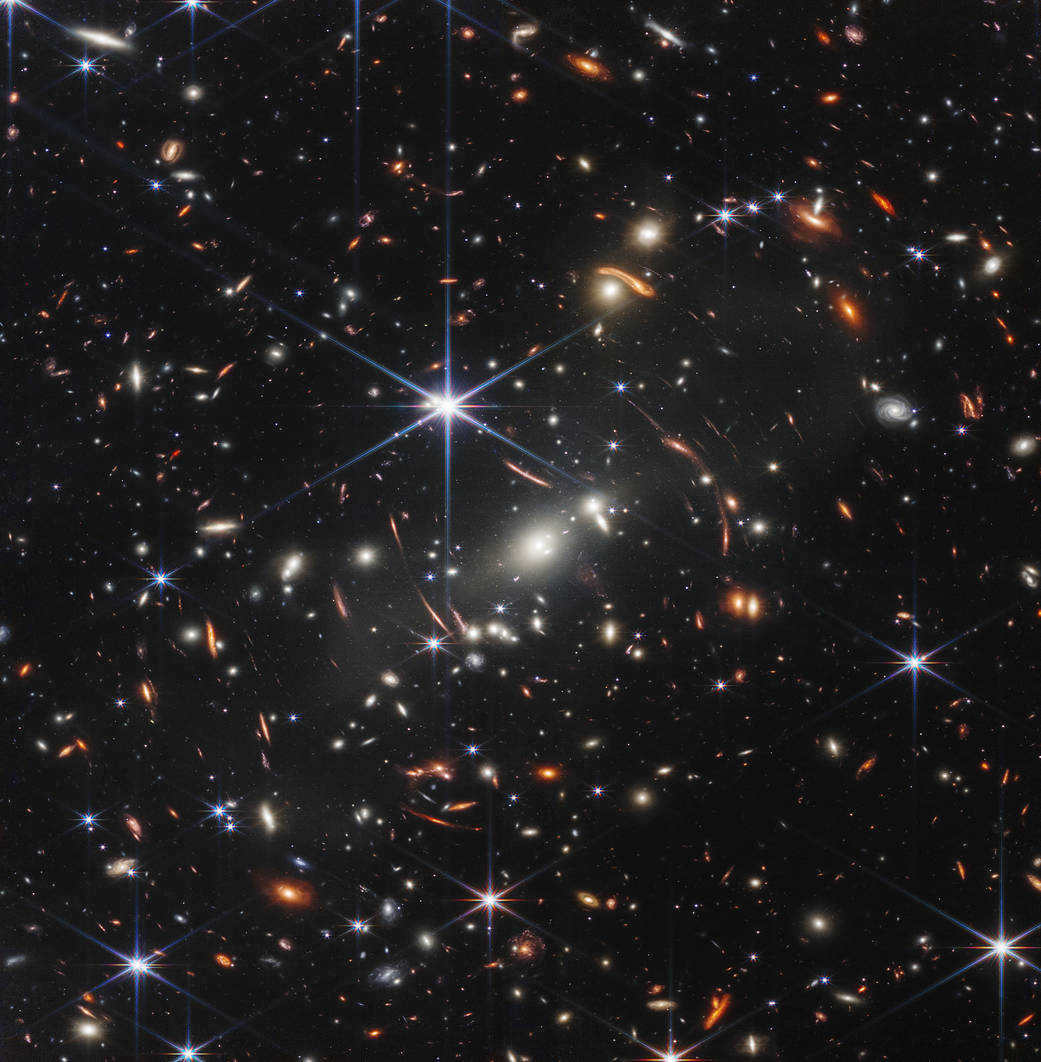

Despite being smaller compared to certain ground-based observatories, Hubble has the advantage of being in space, where it is not affected by atmospheric distortions, allowing it to observe the universe in much greater detail.
Even though it is no longer the most powerful telescope, Hubble still has the capability to observe the universe as it appeared only 500 million years after the Big Bang.
JWST, on the other hand, is currently the most powerful telescope ever constructed and has the ability to observe the universe as it appeared just 200 million years after the Big Bang.
This signifies that Webb can provide an additional 300 million years of cosmic history compared to Hubble. JWST will have the capacity to study some of the earliest galaxies and stars that formed after the Big Bang.
Background Radiation from the Cosmic Microwave
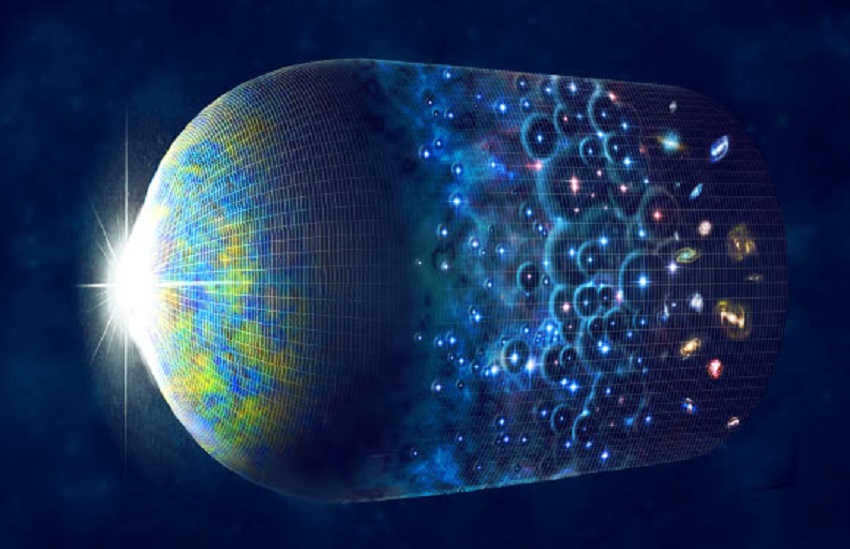
The cosmic microwave background radiation (CMBR) represents the farthest distance that humans are able to observe. This residual radiation is comparable to an echo of the Big Bang, as it consists of the remaining energy from the birth of the universe.
Essentially, the CMBR serves as the limit of our visual perception, marking the point when the universe became transparent to light.
Prior to the existence of the CMBR, light was unable to escape the dense gases and dust that occupied space.
The formation of the CMBR occurred approximately 380,000 years after the Big Bang, allowing us to observe the universe prior to the formation of the first stars.
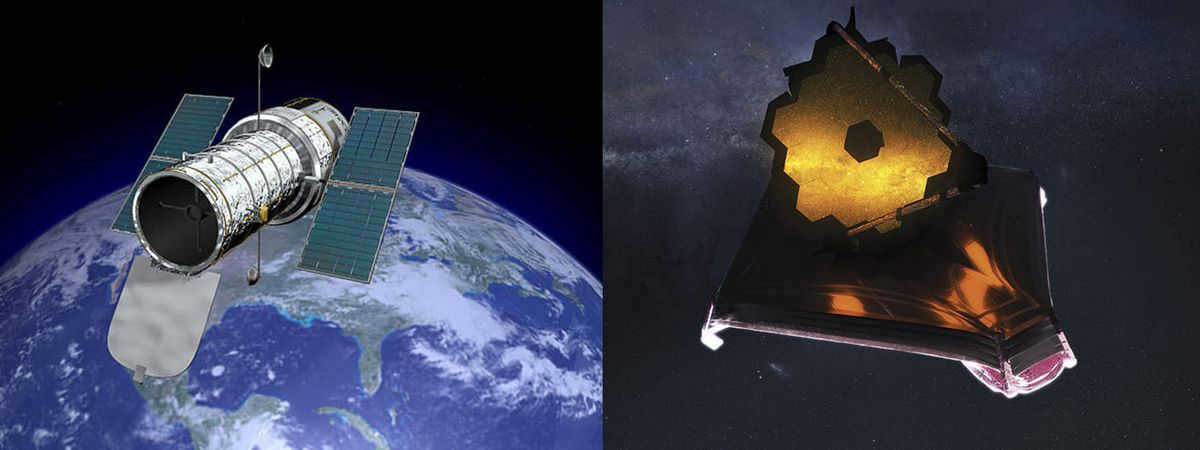
The James Webb Space Telescope was created to serve as the next generation of space observatory following the Hubble Telescope. All of its components have been meticulously designed, constructed, and tested, and it is now ready to be launched into space aboard an Ariane V rocket. Rather than merely replacing the Hubble, the James Webb Telescope is intended to build upon its successes and surpass it in terms of scientific capabilities. The scientific goals of the James Webb Telescope are rooted in the discoveries made by the Hubble, which have demonstrated the immense value and excitement of exploring beyond our current limits. With the Hubble, we have been able to fill in numerous gaps in our understanding of the cosmos. However, by operating in the infrared spectrum and incorporating numerous technological advancements, the James Webb Telescope will further enhance our knowledge by providing invaluable insights into the objects and phenomena that have remained elusive thus far.
Alongside Hubble, which will continue to capture stunning images in the visible and ultraviolet wavelengths, Webb will enable us to explore even broader ranges of wavelengths. This means delving into the distant past and unraveling mysteries that have been hidden for ages.
Webb and the realm of infrared
The James Webb Space Telescope will primarily conduct observations in the infrared spectrum. To accomplish this, it will be equipped with scientific instruments that cover wavelengths ranging from 0.6 to 28 micrometers. It’s important to note that the infrared range in the electromagnetic spectrum spans from 0.75 to several hundred micrometers (millionths of a meter). Consequently, it can be quite challenging and time-consuming to collect data within this range if the available area is limited and the instruments are not optimized. In comparison, the instruments on Hubble can only observe a small portion of the infrared spectrum, specifically between 0.8 and 2.5 micrometers.
Observations in the infrared spectrum hold great significance as dust clouds have the ability to absorb visible light, as well as ultraviolet light to a certain extent, and then emit radiation in the infrared range. Consequently, the detection of infrared excess is indicative of the presence of young stars accompanied by a dust disk that has the potential for planet formation. The same phenomenon occurs at the core of our galaxy, hindering our comprehensive comprehension of the structure and genesis of the galactic nucleus.
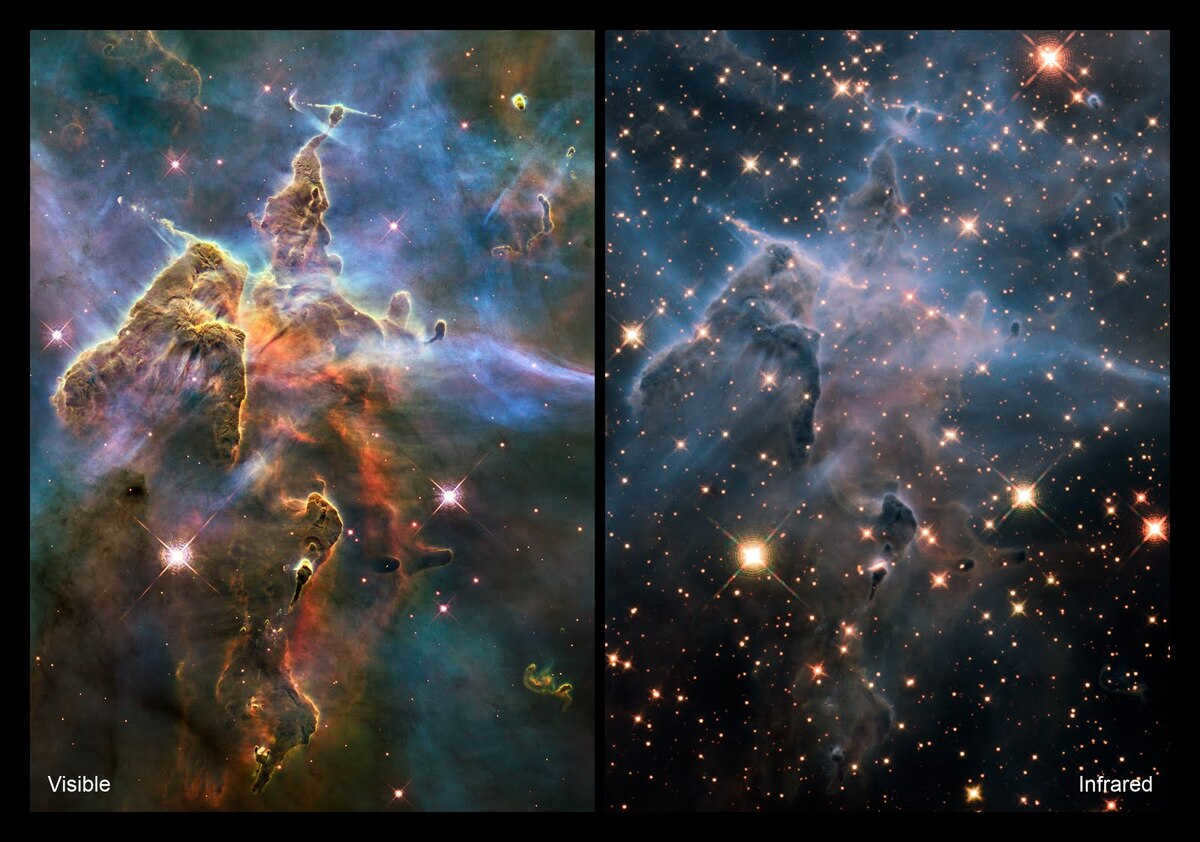
It is precisely due to the implications of having a large collecting area:
Webb was specifically designed and constructed with a primary mirror that has a diameter of 6.5 meters. This grants it a significantly more powerful vision compared to any other telescope that has ever been launched into space. To put it into perspective, Hubble’s main mirror is only 2.4 meters in diameter. While Hubble has certainly made significant progress in terms of its collecting area with this mirror, it still falls short of the expectations we have for Webb’s capabilities.
The Hubble Space Telescope has been in orbit around our planet for over 30 years, positioned approximately 570 kilometers above the Earth. On the other hand, Webb will be situated at the L2 Lagrangian point of the Earth-Sun system, which is located 1.5 million kilometers away from Earth. This is the reason why Webb will be launched using the Ariane V rocket, as it has the necessary power to transport it to such a distance.
Moreover, being at the L2 position, Webb’s solar shield will effectively block out sunlight as well as light reflected from the Earth and the Moon. This makes it the most suitable choice for ensuring the stability of the telescope. In actuality, Webb will be in orbit around the Earth, but it will always maintain the same relative position with respect to both the Earth and the Sun.

What is the extent of Webb’s vision?
The ability to observe distant celestial objects is crucial as it allows us to peer deeper into the past. However, as we continue to explore and research the universe, we discover that it is expanding at an accelerating rate. This expansion causes the radiation to stretch, just as spacetime stretches and galaxies move apart. Consequently, shorter wavelengths transform into longer wavelengths. Consequently, objects located far away become increasingly challenging to discern using visible light. Instead, they manifest as infrared light, which is the wavelength that reaches us.

